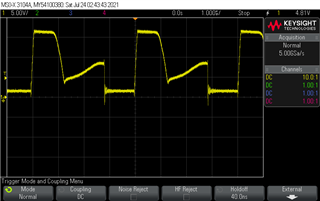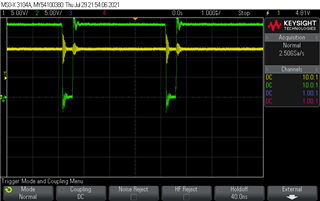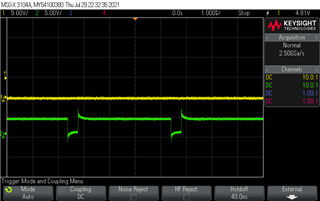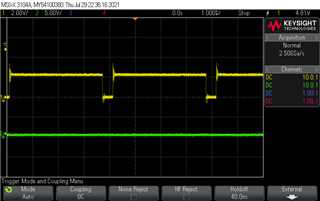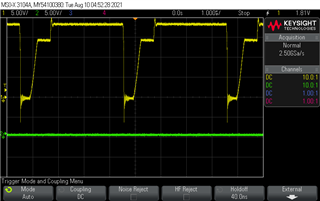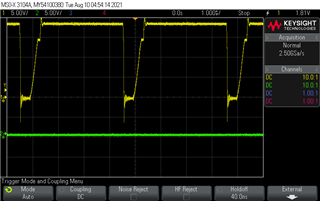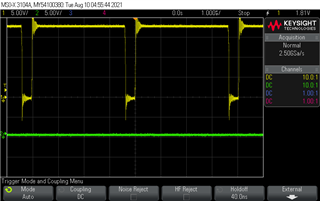Other Parts Discussed in Thread: CSD18502Q5B
Hi:
I am using this part in an MPPT lead acid battery charger in a circuit very similar to the "Typical Application" circuit in the datasheet.
The switching MOSFETS are CSD18502Q5B's and the inductor is a Coilcraft SER2918-103
The DRVL gate drive waveform looks great but the DRVH waveform looks as is in the attached scope shot
I routed both with very short wide traces as recommended
Looking for some insight, thanks!
I routed both with very short wide traces, as recommended.


